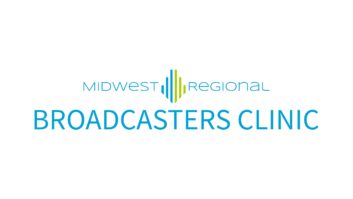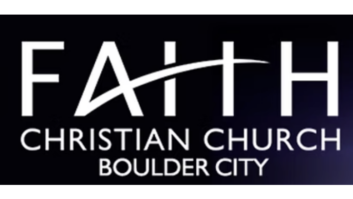Note that the FCC announced a 90-day extension to the filing deadline on June 21; stations must now file applications for earth stations currently operating in the 3.7-4.2 GHz band no later than Oct. 17.
For years, radio and television broadcasters, as well as cable providers, have been relying on C Band satellite systems for reliable distribution of programming content. Some estimates place the number of C Band downlink sites in the United States at more than 27,000, and demand for new facilities shows no signs of letting up.

But as Radio World has reported in recent months, the C Band isn’t something that broadcasters should take for granted. The system is in imminent peril of being rendered useless by terrestrial interference, at least according to some observers.
Among them are Mark and Karen Johnson, principals of LinkUp Communications Corp., who recently traveled to Washington to make their case before the commission.
MAKE WAY FOR BROADBAND
The problem is the FCC’s consideration of changing the rules to allow 3.7–4.2 GHz to be shared by other services. The move is being spearheaded by broadband companies, including Google and Verizon, who are asking the commission to turn over some or all of the spectrum to internet providers for future 5G technology.
But syndicators and networks such as Premiere, Westwood One and NPR as well as many radio and television broadcasters stand opposed to the proposed changes, claiming that interference from terrestrial services could render satellite reception all but impossible.
While the issue is being considered, the FCC instituted a 90-day freeze starting April 19 on applications for new receive-only Fixed Satellite Service (FSS) earth stations in the C Band. At the same time, it asked users of existing earth stations to register them by July 18. While not mandatory, this registration is being strongly urged by leading broadcast groups as well as the commission.
These developments precede an expected Notice for Proposed Rule Making on the proposal that would allow 5G to operate within the same frequency ranges as C Band in the United States. The FCC expects to vote on the matter at its July meeting.
Karen Johnson said that she and Mark Johnson were excited to present to the FCC a “real-life” perspective on the impact 5G broadband could have on the heavily used C Band frequencies. They presented to members of the International Bureau and to staff members of three commissioners in individual meetings.
“We had been urged by both Intelsat and SES Global to make the trip to Washington. Representatives from the Society of Broadcast Engineers joined us, and began to discuss how we could make the best use of the 30 minutes we had before the FCC,” she said.
Intelsat, Intel and SES Global support what they call a market proposal that would let wireless operators access mid-band while satellite users would continue to receive services in the remaining portions of the band with certainty of high-quality operation; that initiative is explained at www.intelsat.com/about-us/c-band-spectrum.
“We quickly realized that our list of concerns was too long for this initial meeting. We decided to focus on the FCC filing forms for registering earth stations — the complexity of the form, the need for the ability to ‘batch file’ multiple C Band downlinks and the fee itself.”
Mark Johnson noted that members of the FCC’s International Bureau, responsible for collecting and tabulating the earth station registration forms, seemed sympathetic to some of the concerns they raised — “in particular, the sheer number of C Band downlinks that many in the industry were attempting to register, and the unbudgeted expense of registering multiple downlinks.
“Despite that,” he said in May, “the $435 filing fee is likely to remain. We were told it was necessary to compensate staffing for the additional burden of handling so many complex filings in such a short amount of time. We are hopeful the FCC may provide some financial relief for multiple downlink registrations, I believe they understood the undue burden this hefty expense would have on so many broadcast licensees.” (An earlier requirement for independent frequency coordination, however, was dropped, saving registrants another step that typically cost $1,000 or more.)
Karen Johnson felt that the FCC staff responded best to hard numbers.
“As Mark spoke about how we arrived at a true number of C Band downlink earth stations in the U.S. — approximately 27,000 — the FCC took note. They were also most interested when we shared that our customer base covered 144 markets with a listenership of 14 million. More importantly, our clients use C-band communications for as much as 98 percent of the programming distributed by their stations into local communities.”
A CALL FOR ‘RIGOROUS’ ANALYSIS
The National Association of Broadcasters filed comments with the commission at the end of May, emphasizing the extensive use of the C Band for content distribution by broadcasters, the lack of reasonably practical alternatives such as fiber, the need for rigorous technical analysis of proposals for terrestrial uses and finally the need to preserve full-band, full-arc licensing of earth stations (see sidebar).
Commenting separately, Dennis Wharton, NAB executive vice president of communications, said, “Every day, thousands of commercial and public TV and radio stations use so-called ‘C Band spectrum’ to deliver broadcast programming to tens of millions of listeners and viewers. These airwaves are essential to the successful transmission of the most popular program content on TV and radio, and suggestions that there are sufficient content delivery alternatives have yet to be proven.
“The burden is on wireless carriers to provide the FCC with rigorous, fact-based analysis that demonstrates that any proposal would not threaten interference-free reception of free and local broadcasting,” Wharton said.
Asked by Radio World earlier this year about interference worries, Commissioner Michael O’Rielly said, “Radio broadcasters and broadcasters in general should not be concerned. As someone who’s leading the effort on the 3.7 to 4.2 band, and the 6 GHz bands, which are the C Band up and down links, we’re going to take care of incumbents. I’m not interested in disrupting incumbents.”
O’Rielly said at the time that he was open to other approaches but also urged C Band users to register: “Tell us if you exist. It’s hard to protect people we don’t know about.”
But then in late May, Karen Johnson said that broadcasters — already feeling somewhat discouraged by the proposed reallocation — became even more so when Chairman Ajit Pai announced a plan to vote on the matter July 12, seven days before the deadline for broadcasters to register earth stations.
Pai spoke to the Wireless Infrastructure Association Connectivity Expo in Charlotte, N.C. He addressed the dual connectivity challenges of infrastructure and spectrum associated with 5G, and barriers that he said broadband faces in the global race for 5G dominance.
He spoke of freeing up spectrum, including frequencies identified as C Band for wireless services; he then announced his intent to put up an NPRM. Details regarding that proposal were yet be released at press time. If it passes, opponents would have 60 days to try to influence the commission before a final vote.
ECONOMIC QUESTION
As broadcasters rally to protect the C Band, they face opposition from several forces. Not only is a powerful Washington lobby for broadband interests engaged, there are other political driving forces in play.
One is the significant boost to the economy that broadband is expected to provide. CTIA estimates that 5G will create 3 million jobs, add $275 billion in new investment and spur $500 million in economic growth. But in order to do that, these experts say, they must access multiple spectrums, including the mid-band frequencies populated by C Band.
The newsletter Inside Towers reported that CTIA President Meredith Attwell Baker urged the FCC to finish rules for the 3.5 GHz portion of mid-band spectrum in time for the July meeting; Baker was also reported to be urging the FCC to schedule an auction for the Citizens Broadband Radio Service spectrum in 2019.
Yet another driving force for broadband is the global race for connectivity. The consulting firm Analysys Mason ranked 10 countries across key factors to determine which were in the best position to win the race to 5G. It put the United States in third place, behind China and South Korea.
Karen Johnson said this is the time for the C Band community to come together and take action.
“We encourage everyone to address the FCC directly with your concerns about the encroachment of 5G into C Band satellite frequencies. Registering your C Band earth station with the FCC and filing a letter stating your concerns about 5G encroachment into C Band frequencies are two very tangible ways you can make a difference.”
To register, visit http://licensing.fcc.gov/myibfs. If you find that page daunting, several of the organizations cited in this article have posted suppport pages; just do an online search for the term C Band and an organization name like NPR PRSS, Intelsat, SBE or SES for example.
WHAT THE NAB SAID ABOUT C-BAND

Excerpts from NAB’s comments:
“First, the C Band is extensively used for content distribution. Virtually every U.S. television and radio household relies on C Band satellite operations for content distribution in some manner. Content providers rely on the C Band to deliver television programming to thousands of MVPD head-ends, over 1,000 broadcast television stations affiliated with national networks and over-the-top service providers. Radio content also relies heavily on dependable access to the C Band. National Public Radio has stated that the public radio system depends on the C Band ‘for reliable distribution of programming to the 475 public radio earth stations that together broadcast public radio programming to 42 million Americans each week.’
“Second, the availability of reasonable, practical alternative means of content delivery, such as fiber, are significantly overstated. In many cases, substitute modes of delivery are unavailable or less reliable. Even in those areas where fiber is available, it may not be economically viable.
“Third, because of the importance of the C Band, and because of the limited alternatives, the commission should insist on rigorous technical analysis of specific and detailed proposals before making decisions that will impact tens of millions of radio and television households. The commission should not assume that technical solutions will appear that will allow incompatible services to share spectrum. NAB reiterates that, as a practical matter, this means the commission should acknowledge that terrestrial users cannot share C Band frequencies based on geographic separation alone. As commenters have explained, earth stations must be designed to reliably capture highly attenuated signals from satellites more than 22,000 miles away. Accordingly, these facilities are extremely sensitive and highly vulnerable to terrestrial interference. Indeed, this is the reason why the FCC has historically required frequency coordination between satellite and point-to-point microwave users in this band. Significant separation distances, ranging from tens or, under extreme circumstances, even hundreds of kilometers, would be required to ensure that fixed and mobile terrestrial signals do not prevent reliable reception of satellite downlinks. Mobile operations in particular cannot be authorized in the same frequency band as existing C Band operations because there is no reliable means of geofencing mobile users or mobile handsets from operation in exclusion zones.
“Finally, in considering options for expanded fixed use of the C Band, the commission should reject any proposal to eliminate or constrain its longstanding and highly successful full-band, full-arc earth station licensing policy, under which FSS earth stations may coordinate across the entire frequency band over the entire geostationary arc. Preserving the longstanding flexibility that full-band, full-arc licensing provides is essential to broadcasters and other users that rely on satellite services. Because satellites are in orbit high above the earth, on-orbit equipment problems or failures cannot be repaired by a ‘truck roll.’ Significant flexibility in both satellite choice and transponder frequency are absolute necessities to assure reliable operation.”







